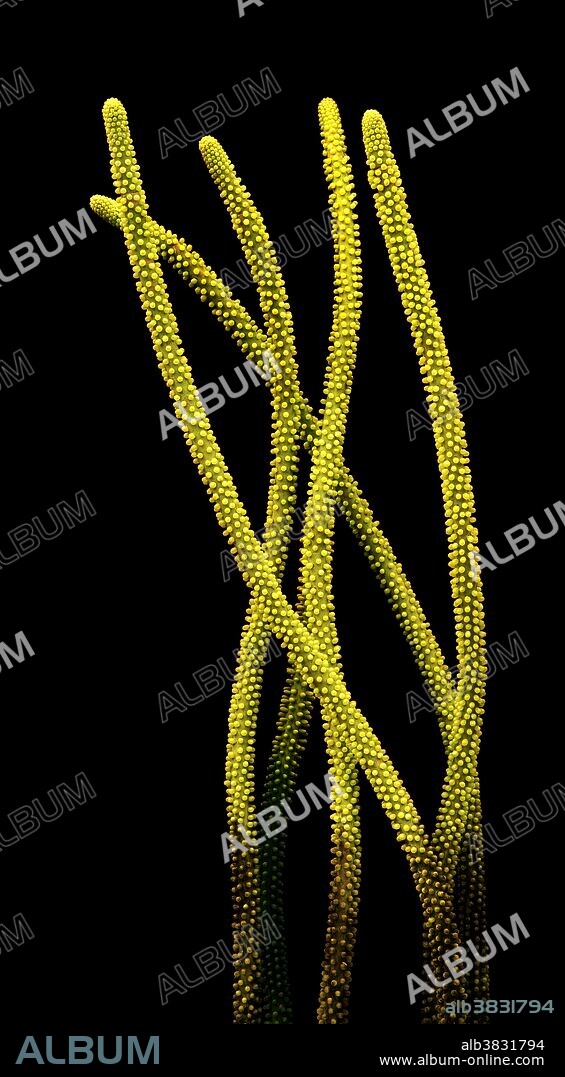alb3831794
Burgess Shale algae

|
Zu einem anderen Lightbox hinzufügen |
|
Zu einem anderen Lightbox hinzufügen |



Haben Sie bereits ein Konto? Anmelden
Sie haben kein Konto? Registrieren
Dieses Bild kaufen.
Nutzung auswählen:

Titel:
Burgess Shale algae
Untertitel:
Siehe automatische Übersetzung
Reconstruction of the dasycladacean algae, Margaretia dorus, from the Middle Cambrian Burgess Shale of British Columbia. This alga was recognized by Charles Walcott in the early 1900s as being cylindrical like a sea whip, but later workers described it as having strap-shaped, kelp-like fronds. After examining specimens in the Smithsonian collection, Terry Chase recognized it as a primitive, cylindrical dasycladacean algae whose spiraling arrangement of holes were attachment points for bead-like branches that projected perpendicularly from the central stalk. Though the side branches were not obvious in the Burgess Shale specimens, this concept was adopted for an exhibit reconstruction of the Burgess Shale biota for the Smithsonian. Specimens later recovered from the Middle Cambrian Wheeler Shale of Utah confirmed Chase's speculation. They are cylindrical with beautifully preserved bead-like projections from each hole. Similar algae, like Rhabdoporella from the basal Ordovician of Texas, display a similar structure. Silurian limestones in Sweden are composed almost entirely of these cylindrical dasycladaceans.
Bildnachweis:
Album / Science Source / Chase Studio
Freigaben (Releases):
Bildgröße:
3315 x 6010 px | 57.0 MB
Druckgröße:
28.1 x 50.9 cm | 11.1 x 20.0 in (300 dpi)
Schlüsselwörter:
AUSGESTORBENE TIERE • FAUNA • FOSSILIEN • ILLUSTRATION • ILLUSTRATIONS • KANADA • PRAEHISTORISCH • TIER • TIER, ALLE • WIEDERAUFBAU
 Pinterest
Pinterest Twitter
Twitter Facebook
Facebook Link kopieren
Link kopieren Email
Email
